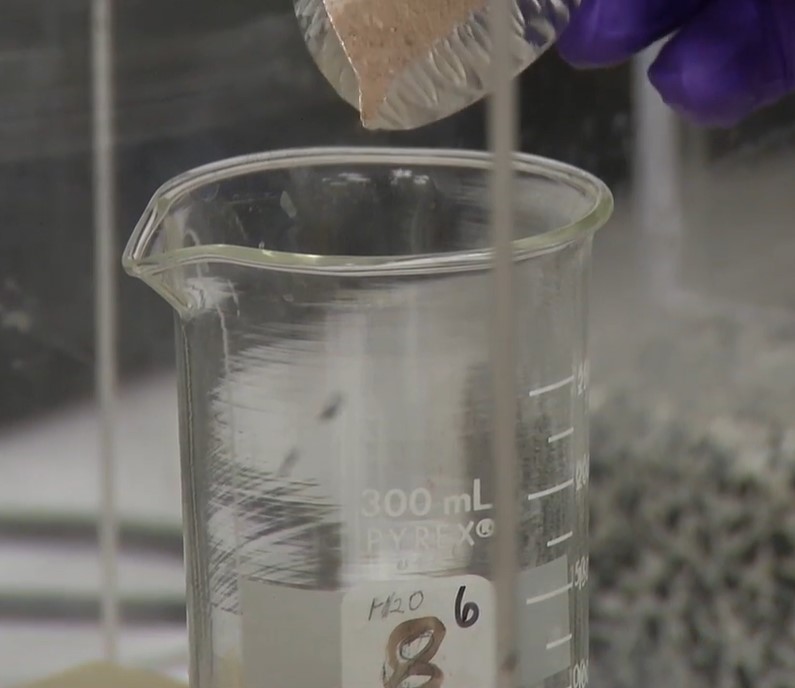Science of Transportation: Calcium Carbonate testing
Science of Transportation: Calcium Carbonate testing

Plants won’t grow if they’re rooted in the wrong soil – no matter how green your thumbs are.
That’s why ADOT makes sure its topsoil is suitable for good growth...
Before you start asking why ADOT, a department responsible for building and maintaining state highways, would put time and money toward soil and plants, let us just say that landscaping serves a very practical role beyond making things look prettier.
According to the ADOT Construction Manual, “Functional plantings serve to improve traffic guidance, reduce headlight glare, provide safety features, reduce pollution, provide view and wind screening, control erosion, act as a sound barrier and contribute to improved aesthetic values.”
Topsoil testing
The topsoil (top two feet of soil) that’s used on ADOT projects in urban areas must meet certain specifications to make sure that plantings will have a chance to thrive. Before a source of topsoil is accepted on an ADOT project, an analysis is completed to check pH levels, soluble salts, exchangeable sodium and other characteristics.
We’re not going to focus on every single test in this blog post (that would take too long and there are good soils books that do just that!). Today, we just want to explain how topsoil is tested for Calcium Carbonate.
As you'll see in the video below, ADOT’s Materials Chemistry Lab starts with a gram of soil.
After adding a Hydrochloric Acid solution to the soil (this ensures the complete decomposition of the Calcium Carbonate), the mixture is filtered. Next, a drop of Phenolphthalein Indicator is added (this is a chemical that will change color depending on the composition of what it mixes with).
Now, a Sodium Hydroxide Solution is measured into that solution until it turns to a pinkish color. The amount of Sodium Hydroxide Solution necessary for that reaction to take place is recorded and used in an equation that shows the percentage of Calcium Carbonate in that soil sample.
Isn’t science amazing?
In order for topsoil to pass for use on an ADOT project, six samples can’t average more than 8 percent Calcium Carbonate.
Calcium Carbonate isn’t bad – a certain level of it is needed in soil – you just don’t want too much of it, otherwise plants are going to have a hard time.
“It can bind the soil particles together so tightly that water can’t penetrate,” said ADOT’s Chief Landscape Architect LeRoy Brady. “If the percentage of Calcium Carbonate is too high, you’re not going to get infiltration of what little rainfall we get.”
Brady says a high presence of Calcium Carbonate can also make other micronutrients not as available.
If a topsoil source does not meet specifications, ADOT can reject it and require that the contractor use another source. In some cases, ADOT can require that a contractor treat the soil to fix the problem.
The end goal for all this testing is to make sure that the landscaping lasts.
"We’re looking at the long term," Brady says. "We want to make it as sustainable as possible."
According to ADOT Chemist Jeffrey Faulkner, the ADOT lab tests approximately 100 topsoil samples for Calcium Carbonate each year.
You might think that highway construction is all about big machinery, heavy-duty vehicles, massive structures and materials by the ton – but it’s not. Sure, those are important, but when it comes to building a road, science plays a strong role too. In fact, the work ADOT does off the project site and inside a lab is so significant that we are highlighting it here on the blog with a new series we’re calling, The Science of Transportation.
